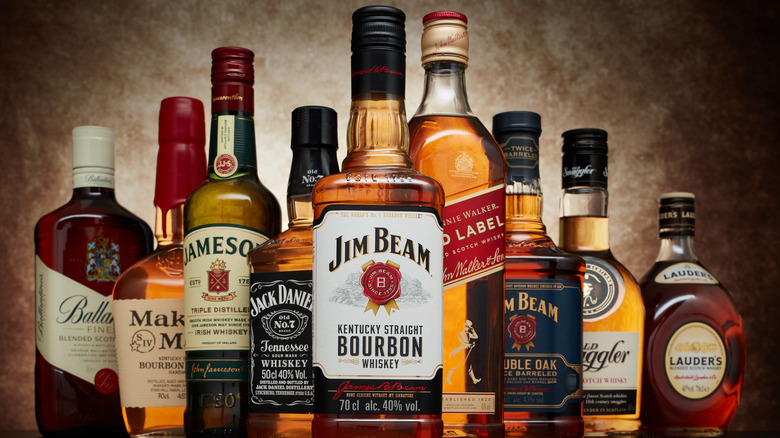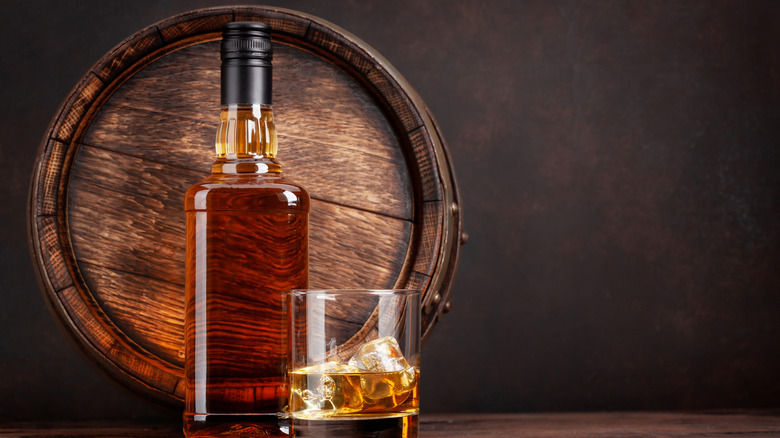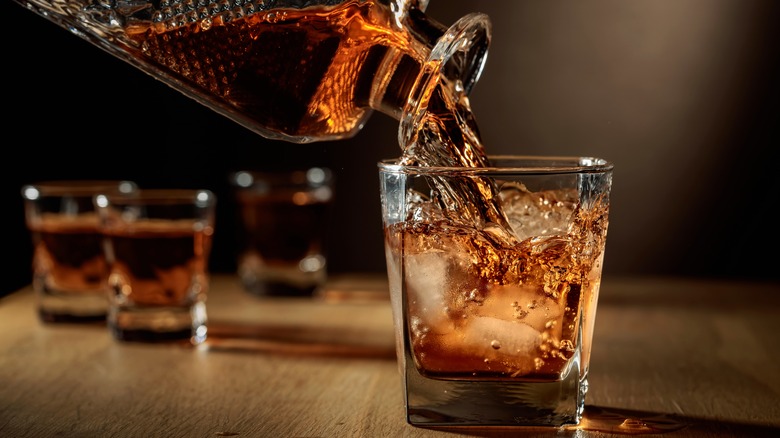The Whiskey Infinity Bottle, Explained
In the whiskey collecting world, a certain trend has been growing for over a decade, even developing its own nerd subculture of fervent dram fans. Known as the "whiskey infinity bottle" — and also as the "solera", "fractional", or "living" bottle — it offers a new way to enjoy scotch, bourbon, or rye. But what is it, exactly? And how do you create your own?
The idea of the personal infinity bottle seems to have caught on with whiskey aficionados around 2012, after a video by YouTuber Ralphy Mitchell. The basic idea is to find an empty vessel — like a blending bottle or decanter — then pour in a dram of any new whisky that you buy. That said, you can also fill your infinity bottle with the ends of various whiskies that you haven't got around to finishing.
The result? Your own unique blend that tastes like nothing else — one that is irreplicable and irreplaceable. In this way, your infinity bottle becomes an expression of you — your taste in whiskey, your idea of what makes a good blend, all the distilleries you've visited. In essence, you could see it as a liquid record of the different labels you've bought or been gifted over time. Your infinity bottle could even end up as a family heirloom, a singular blend passed onto your children. And ideally, one that contains the ghosts and traces of rare, expensive, or collectible whiskies.
But where does this practice come from?
Why infinity bottles are based on an old sherry method
While the infinity bottle has picked up traction in recent years among whiskey collectors, its roots go back much further. In fact, it is based on an ongoing distillery practice known as "solera". According to Sherry Notes, the solera system probably originated in 18th century Spain as a way of ageing and fractionally blending sherries. Basically, it is a practice of older casks of sherry being topped up with newer ones, creating a consistency of flavor and quality.
Eventually, the practice was taken up by whiskey distilleries in the late 1990s (via Whiskey Reviewer). One example is Glenfiddich's 15 Year Old Single Malt, a Speyside scotch produced in a vat maintained since 1988 (via Glenfiddich). Yet a cask of solera whiskey differs from a personal infinity bottle in one crucial way — because with the latter, there are no real rules.
Your whiskey infinity bottle is a never-ending story
Unlike the solera system, your own infinity blend isn't a carefully systemized and staggered process focusing on a specific whiskey or blend. You can top up your bottle however and whenever you want — and with whatever you have to hand. And sure, there are plenty of opinions on how to build a good infinity bottle, but it should also be an expression of your personal taste, meaning that experimentation is key.
That said, Oak Bottle warns against combining scotch, bourbon and rye — although bear in mind that others will marry them merrily. As Whiskey For The Ages points out, "It's your bottle. Do what you want". And if you'd like to keep track of what's being poured in, Punch suggests Ralphy Mitchell's practice of adding a label to your bottle listing what you've added by date.
And if there is a single rule to maintaining an infinity bottle, it's to never let it go empty — in fact, you want to keep it topped right up. Meaning that every time you pour a dram from out it, you should replace it with an equal measure of whiskey. In this way, your infinity bottle is never-ending and always evolving, with a flavor profile that can literally change day by day. It can be a "living" whiskey, a reflection of you and eventually, even a treasured family heirloom.


